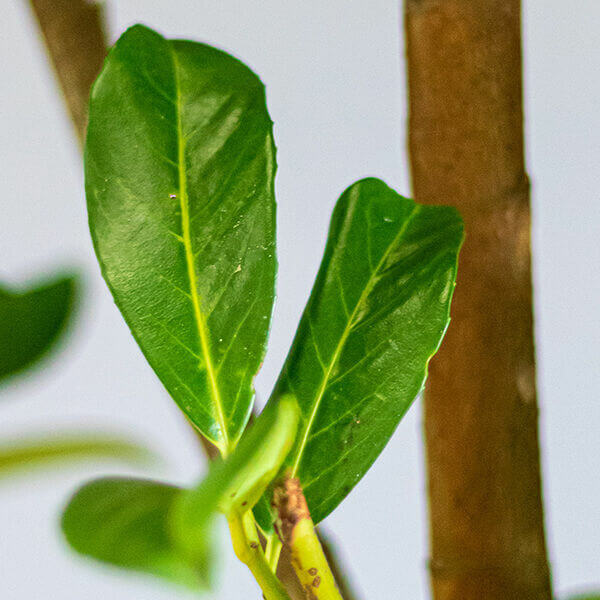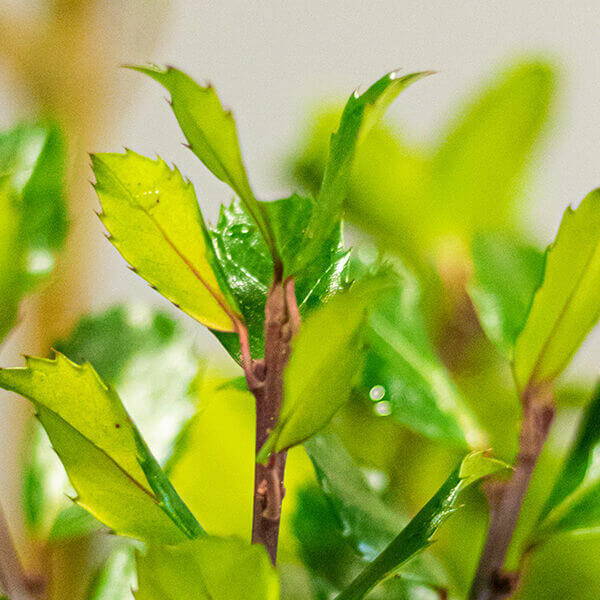Best Hedge Plants For Privacy
Best Hedge Plants For Privacy
Blog Article
Best Hedging Plants For Versatile Gardens
Boost your garden's allure with lush hedge varieties such as Yew (Taxus), Thuja, Laurel, Photinia, and Bamboo, commemorated for their structural stability and ecological benefits.
Yew and Thuja supply evergreen coverage and winter resilience, while Laurel offers rapid growth and broad, fragrant leaves.
Photinia includes seasonal charm with its lively red foliage, and Bamboo lends a low-maintenance, tranquil atmosphere.
These hedges improve air quality, reduce noise, and create tranquil, personal spaces.
Appropriate planting, spacing, and maintenance guarantee energetic growth and environmental consistency.
Explore how these rich ranges can raise your garden's beauty and well-being.
Secret Takeaways
Change Your Garden With Lush Hedge Varieties
- Select Yew for its dense, evergreen growth and unequaled durability.
- Go with Laurel for its fast growth and broad leaves, guaranteeing quick personal privacy.
- Pick Photinia for its vibrant seasonal foliage, which turns a striking dark red.
- Use Bamboo for a low-maintenance, winter-hardy hedge with aesthetic appeal.
- Area plants 2-3 per meter and prune regularly for optimal development and health.
Popular Hedge Plants
When changing a garden with lush hedge varieties, it's vital to think about popular hedge plants such as Yew, Thuja, Laurel, and Photinia due to their unique attributes and benefits.
Yew (Taxus) is highly esteemed for its longevity and dense, green growth, making it a prime option for sustaining landscapes.
Thuja is noted for its evergreen foliage and robust winter durability.
Photinia adds seasonal vibrancy with red leaves that darken over time, producing dynamic visual appeal.
Laurel offers rapid development and aromatic, broad leaves, perfect for fast personal privacy.
In Addition, Bamboo is an excellent option for atmosphere, offering a low-maintenance, winter-hardy option that improves the garden's visual with its sophisticated, swaying walking sticks.
These selections deal with a range of horticultural requirements and preferences.
Benefits of Garden Hedges
Garden hedges use a multitude of advantages, making them a valuable addition to any landscape. These natural barriers are cost-effective to carry out and supply considerable wind security, improving air circulation and adding to noise reduction. The dense foliage of hedges like Thuja and Beech ensures personal privacy by blocking visibility, developing a peaceful and secluded environment.
Hedges likewise play a crucial function in microclimate regulation, offering a steady environment that cultivates plant development and reduces temperature level changes. Their intricate leaf structures filter contaminants, enhancing air quality and contributing to a much healthier garden ecosystem.
Furthermore, hedges master noise reduction, absorbing and deflecting sound waves to lower ambient noise levels. This double performance of supplying both visual and acoustic privacy enhances the overall harmony and aesthetic appeal of any garden.
Planting and Upkeep Tips
For an effective hedge, precise preparation of the planting area is important. Guarantee the soil has appropriate pH and drain to support strong root advancement.
Space the plants appropriately for the selected species. Water the hedge frequently during its initial growth stage, changing as required with seasonal modifications.
Implement a systematic bug control and disease avoidance technique, utilizing organic or chemical treatments when required. Frequently inspect for aphids, mites, and fungal infections.
Apply mulch to keep wetness and reduce weeds. Seasonal pruning promotes thick growth and air flow, vital for plant health.
Following these standards will assist you cultivate a dynamic, properly maintained hedge that enhances the charm of your garden.
Spacing and Cutting Guidelines
Spacing and Trimming Guidelines
Correct spacing and trimming are vital for cultivating healthy, aesthetically appealing hedges. Appropriate spacing makes sure each plant gets sufficient nutrients, light, and airflow.
Follow these guidelines for optimal hedge maintenance:
- Spacing: Position hedge plants 2-3 plants per meter to encourage robust development.
- Pruning Techniques: Routine pruning is important for preserving preferred hedge height and shape. Trim new growth in summer season and cut back older wood throughout winter season.
- Seasonal Care: Change trimming methods and schedules according to seasonal requirements to ensure plant health.
- Hedge Height: Regularly monitor and cut to keep the desired hedge height and accomplish consistent aesthetics.
Abiding by these actions will guarantee your hedge grows, boosting both the appeal and functionality of your garden.
Picking the Right Hedge
Choosing the Right Hedge
Selecting the proper hedge involves examining factors such as fully grown height, foliage density, and environmental durability. Effective hedge plant choice requires comprehending each species' development characteristics and site-specific versatility.
For instance, Yew (Taxus) offers outstanding longevity and thick growth, while Thuja is noteworthy for its winter resilience. Furthermore, thinking about maintenance requirements is important; fast-growing types like Laurel or Privet need routine trimming, whereas low-maintenance alternatives like Bamboo or Ivy might be more suitable for those looking for very little upkeep.
Environmental aspects such as soil type, light schedule, and wetness conditions should likewise guide the choice process. This mindful approach ensures the chosen hedges will thrive, offering both aesthetic and functional advantages to the garden landscape.
Shipment and Planting Recommendations
To guarantee your hedge plants prosper, they must be delivered by specialized couriers and planted promptly upon arrival.
Follow these essential actions for effective planting:
- Soil Preparation: Enhance the soil with raw material to enhance drain and nutrient material.
- Planting Depth: Produce a trench twice the width and equal to the depth of the root ball.
- Watering Methods: Water thoroughly after planting, keeping the soil consistently wet however not filled.
- Mulching: Apply a layer of mulch to retain wetness and suppress weeds.
Customer Assistance and Service
Provided the essential function of prompt support in horticultural pursuits, our client assistance group is offered six days a week through telephone, e-mail, and social media to use professional suggestions and quickly deal with any issues. Their devotion to quick response times makes sure customer fulfillment by resolving inquiries connected to plant health, ideal planting methods, and maintenance schedules.

Action Time
Within 24 hours
This thorough support group, reinforced by an outstanding 9.3/ 10 consumer ranking, highlights our dedication to enhancing the gardening experience for every client.
Often Asked Questions
For How Long Does It Consider Hedge Plants to Develop?
Hedge plants normally need one to 3 years to end up being totally developed, with the specific period differing by types and growing conditions.
Efficient care throughout this vital duration is vital for robust growth. Consistent watering, vigilant weed control, and appropriate fertilizer application are pivotal in promoting strong root development.
For instance, fast-growing types like Laurel might establish quicker, while slower-growing varieties such as Yew might take longer. Diligent upkeep speeds up the establishment process, leading to healthy and thick hedges.
What Are the Best Hedge Plants for Personal Privacy?
The question of the best hedge plants for privacy includes assessing evergreen and deciduous alternatives.
Evergreen hedges like Thuja, Laurel, and Cypress offer year-round protection, guaranteeing continuous personal privacy.
On the other hand, deciduous hedges such as Beech use seasonal personal privacy, shedding leaves in colder months.
Key maintenance pointers for privacy hedges include routine cutting, fertilizing in spring, and appropriate spacing-- typically 2 to 3 plants per meter.
In addition, constant watering and diligent weed removal are essential for promoting healthy, thick development.
Can Hedge Plants Bring In Wildlife to My Garden?
Yes, hedge plants can bring in wildlife to your garden by supplying vital benefits like shelter, food, and nesting websites, thus enhancing regional biodiversity. Yew, holly, and laurel are excellent for drawing in birds, while ivy supports a variety of bugs.
Nevertheless, it's essential to note that there are some drawbacks, such as increased upkeep to manage bugs and routine upkeep. Thoroughly picking and preserving hedge ranges can assist balance these drawbacks and benefits, eventually fostering a sustainable and lively community in your garden.
Are There Any Blooming Hedge Plants Available?
Yes, there are flowering hedge plants available that can improve the beauty of your garden.
For Additional reading example, Elaeagnus, also understood as Olive Willow, produces fragrant white flowers in the fall, adding a touch of elegance.
Photinia, another popular choice, showcases vibrant red leaves that develop into a rich green, producing a vibrant visual effect throughout the seasons.
To guarantee these plants grow, it's essential to practice appropriate pruning strategies and seasonal maintenance, such as cutting new growth in the summer season and cutting back in the winter season.
These procedures will assist maintain the health and aesthetic appeal of your blooming hedges.
How Do I Prevent Pests in My Hedge Plants?
To prevent bugs in hedge plants, utilize natural insect control techniques and preserve appropriate hedge care. Introduce useful pests like ladybugs, which victimize damaging bugs, to develop a well balanced environment.
Frequently check your hedges for signs of invasion and promptly eliminate any affected parts to avoid the spread. Ensure the health of your hedges by applying well balanced fertilizers and supplying adequate water.
Make use of mulching to keep soil moisture and appropriate spacing to lower plant stress and promote robust growth. These practices jointly assist in reducing pest concerns and preserving a healthy hedge.
Conclusion
In essence, selecting the best hedge varieties such as Yew, Thuja, and Laurel can transform any garden into a tranquil haven. These plants offer year-round greenery, enhance visual appeal, and offer practical benefits like noise reduction and wind security.
Correct planting methods, accurate spacing, constant watering, and seasonal cutting are important for optimal development.
Reputable shipment services and professional customer support guarantee a smooth experience from purchase to planting, making it easier than ever to raise your outdoor area.
Garden hedges offer a multitude of benefits, making them an important addition to any landscape. These natural barriers are cost-effective to implement and supply substantial wind defense, boosting air blood circulation and contributing to noise decrease. The dense foliage of hedges like Thuja and Beech ensures personal privacy by obstructing exposure, developing a serene and remote environment.

Pruning Methods: Routine pruning is important for maintaining wanted hedge height and shape. Cut new development in summertime and cut back older wood during winter season.
Report this page